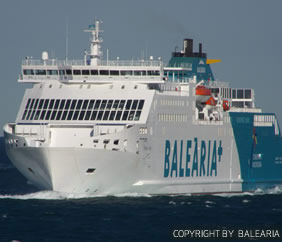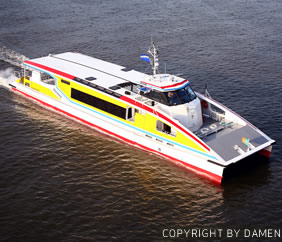RoPax ferry

Ro-Ro passenger ferries (RoPax ferries) operate mainly in European waters and are serving in the area of transportation of passengers and freight (Trailers, Mafis, SECU boxes and other rolling cargo). They typically operate on distinct time schedules between ports and thus normally have a well-known operating profile. They contribute to the diversion of road transport to waterborne transport as outlined in the Marco Polo programme and form a part of the goals of the TEN-T program.
RoRo Passenger Ships today typically operate with HFO and in some cases they use MDO. Their propulsion train is typically very conventional with diesel- mechanic propulsion system and separated aux. diesel engines. Some additional engine power is foreseen in order to improve the manoeuvrability in ports and/or for catching up the time schedule if necessary. Safe return to port requirements may in some cases also call for additional installation of power on-board, engines in separate compartments is often required. The energy consumption is very much dependant on the route which is served and ranges from a few 1000 kW up to 50.000 kW for RoPax Vessels in the Mediterranean. RoPax vessels contribute to approximately 8 % of the worldwide maritime CO2-emissions and are responsible for a relatively high share of the SOX and NOX emissions in the North Sea and Baltic Sea region as well as in the Mediterranean. Alternative fuels are widely discussed in the shipping industry, but real applications are limited. The environmental impact of renewable energies is heavily debated and only a few test applications have been realized in the industry, which are mostly IPR protected.
Read more ...Urban ferry

In the JOULES project Damen will study the “Urban Ferry”. The Water Bus 3007 is in consideration. This Water Bus is used for public transport and can carry up to 130 people. It features a large open deck area to carry bicycles and other items. The ferry has a length of just over 30 meters and a beam of just over 7 meters. The ship has a service speed of 21 knots. Because of the extremely narrow hulls of the catamaran, minimal wash is created which minimizes disturbance to other vessels as the Water Bus passes.
Read more ...





